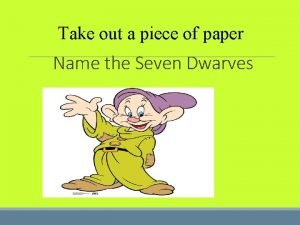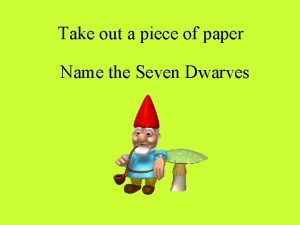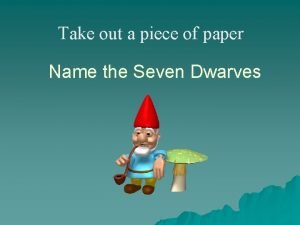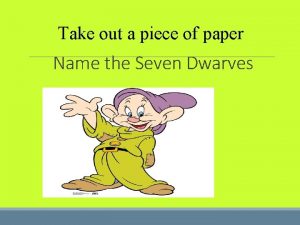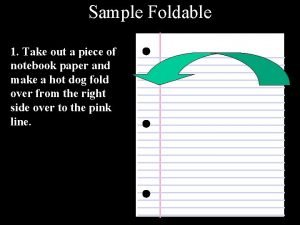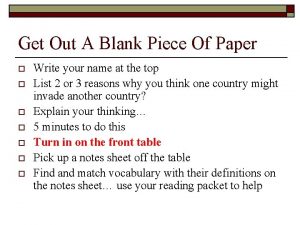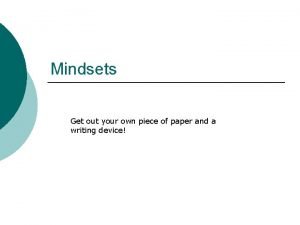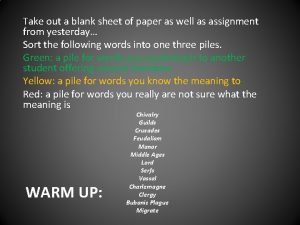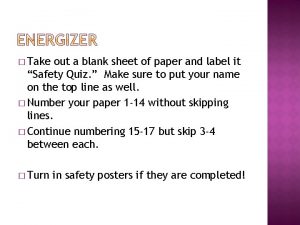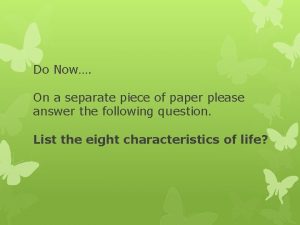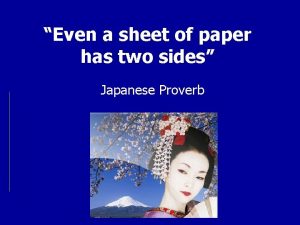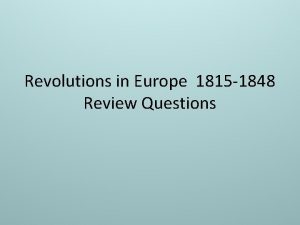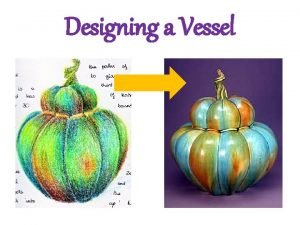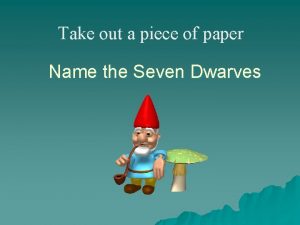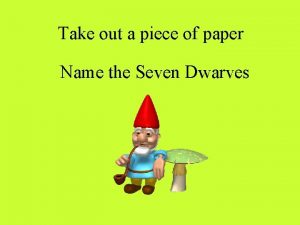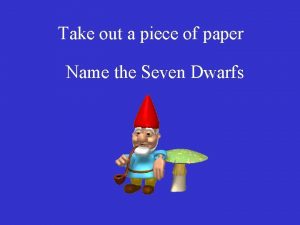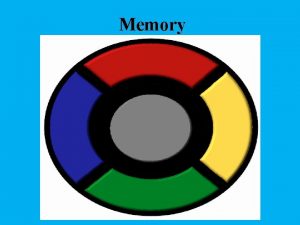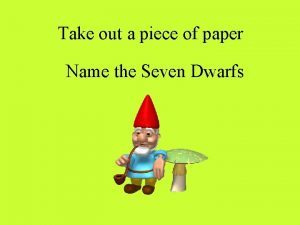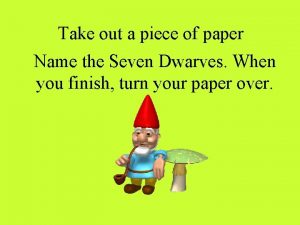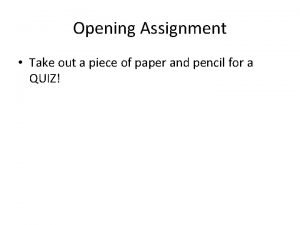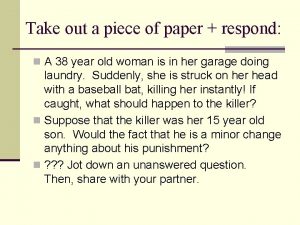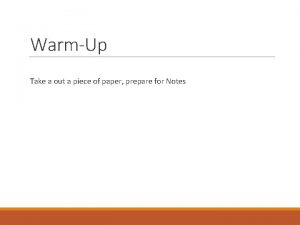Take out a piece of paper Name the
















- Slides: 16

Take out a piece of paper Name the Seven Dwarves

Difficulty of Task • Was the exercise easy or difficult. It depends on what factors? • Whether you like Disney movies • how long ago you watched the movie • how loud the people around you when you are trying to remember

As you might have guessed, the next topic we are going to examine is……. Memory The persistence of learning over time through the storage and retrieval of information. So what was the point of the seven dwarves exercise?

The Memory process • Encoding • Storage • Retrieval

Encoding • The processing of information into the memory system. Typing info into a computer Getting a girls name at a party

Storage • The retention of encoded material over time. Pressing Ctrl S and saving the info. Trying to remember her name when you leave the party.

Retrieval • The process of getting the information out of memory storage. Finding your document and opening it up. Seeing her the next day and calling her the wrong name (retrieval failure).

Turn your paper over. Now pick out the seven dwarves. Grouchy Gabby Fearful Sleepy Smiley Jumpy Hopeful Shy Droopy Dopey Sniffy Wishful Puffy Dumpy Sneezy Pop Grumpy Bashful Cheerful Teach Snorty Nifty Happy Doc Wheezy Stubby Poopy

Seven Dwarves Sleepy, Dopey, Grumpy, Sneezy, Happy, Doc and Bashful

Did you do better on the first or second dwarf memory exercise? Recall v. Recognition • With recall- you must retrieve the information from your memory (fill-in-the blank tests). • With recognition- you must identify the target from possible targets (multiple-choice tests). • Which is easier?

Flashbulb Memory • A clear moment of an emotionally significant moment or event. Where were you when? 1. You heard about 9/11 2. You heard about the death of a family member 3. During the OJ chase

Types of Memory • Sensory Memory: • Short-Term Memory • Long-Term Memory

Sensory Memory • The immediate, initial recording of sensory information in the memory system. • Stored just for an instant, and most gets unprocessed. Examples: • You lose concentration in class during a lecture. Suddenly you hear a significant word and return your focus to the lecture. You should be able to remember what was said just before the key word since it is in your sensory register. • Your ability to see motion can be attributed to sensory memory. An image previously seen must be stored long enough to compare to the new image. Visual processing in the brain works like watching a cartoon -- you see one frame at a time. • If someone is reading to you, you must be able to remember the words at the beginning of a sentence in order to understand the sentence as a whole. These words are held in a relatively unprocessed sensory memory.

Short-Term Memory • Memory that holds a few items briefly. • Seven digits (plus of minus two). • The info will be stored into long-term or forgotten. How do you store things from short-term to long-term? Rehearsal You must repeat things over and over to put them into your long-term memory.

Working Memory (Modern day STM) • • Another way of describing the use of short -term memory is called working memory. Working-Memory has three parts: 1. Audio 2. Visual 3. Integration of audio and visual (controls where you attention lies)

Long-Term Memory • The relatively permanent and limitless storehouse of the memory system.
 Where are memories stored
Where are memories stored Fictional character names
Fictional character names Take out a piece of paper
Take out a piece of paper Take out a piece of paper
Take out a piece of paper Take out a piece of paper
Take out a piece of paper Take out a piece of paper
Take out a piece of paper Take out a piece of paper
Take out a piece of paper A piece get out of paper
A piece get out of paper Take out a sheet of paper
Take out a sheet of paper Take out a sheet of paper
Take out a sheet of paper Songs with literary devices
Songs with literary devices Name tent directions
Name tent directions Separate piece of paper
Separate piece of paper Paper sides
Paper sides Piece of paper
Piece of paper Intelligent piece of paper
Intelligent piece of paper Match the correct meaning
Match the correct meaning
